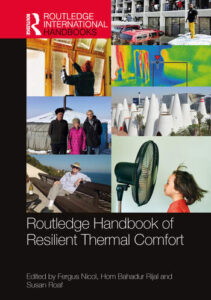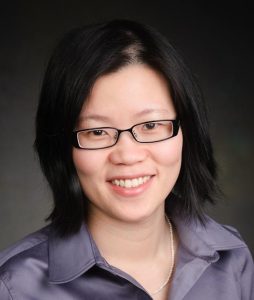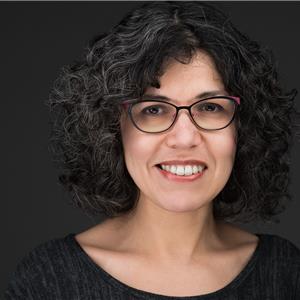Since the inception of its green roof research program in 2002, BCIT has created an integrated research team from various disciplines (architecture, acoustics, building envelope science, engineering, landscape architecture, planning, horticulture, ecology, and land-use planning). In addition to research and faculty tasks, the team members all contribute to the Centre’s educational programs.
Rodrigo Mora, P.Eng., PhD
Faculty, Centre for Architectural Ecology
Faculty, Building Science Graduate Program

Rodrigo is a Faculty of Building Environmental Systems at the British Columbia Institute of Technology. His areas of expertise are: building environment and systems, building environmental modeling, thermal comfort, and air quality. Over the years Rodrigo has been contributing to professional organizations such as ASHRAE and ASCE, and participating in international initiatives focused on research on healthy and occupant-responsive, low-energy buildings. His current research interest is on environment and occupant sensing and monitoring integral to buildings, building environmental data analytics, and smart building environmental systems.
Rodrigo’s goal is to investigate novel building and urban synergistic environmental systems that are responsive to the needs of people, and in harmony with the environment. Rodrigo’s research focuses on improving the knowledge on modelling and measuring techniques for predicting the performance of environmental systems and their effects on the built environment, and how these can affect human health and improve the human experiences. Rodrigo and his team are investigating human and environment adaptive environmental systems to changing patterns of environmental loads, that smoothen the building environmental fluctuations to climate variations, and eliminate or minimize the need for energy-intensive solutions. A central question is: how to design environmental systems to be simple and smart, naturally matching human needs and environmental affordances, while also being robust and resilient to the extreme environmental loads of climate change?
Publications:
Current Research Projects:
- Environment and occupant sensing and monitoring integral to buildings
- Building environmental data analytics
- Smart building environmental systems
Background Affiliations:
- ASHRAE SSPC-55: Thermal Environmental Conditions for Human Occupancy, voting member, http://sspc55.ashraepcs.org/
- ASHRAE SSPC-170: Ventilation of Health Care Facilities, 55-170 liaison
- ASHRAE T-TAC-TC04.10: Indoor Environmental Modelling, corresponding member
- IEA-EBC ANNEX 69: EBC Annex 69 Strategy and Practice of Adaptive Thermal Comfort in Low Energy Buildings, participant
- TECA (Thermal Environmental Comfort Association of BC): Quality 1st Certified in Ventilation, Forced-Air, and Hydronics Design
Course Development and Teaching at BCIT
- BSCI 9000 Building Science 1 (2011- ), course created, Building Science Master’s Degree, BCIT
- BSCI 9100 Building Environment and Climate (2011- ), course created, Building Science Master’s Degree, BCIT
- BSCI 9170 Ventilation and Indoor Air Quality (2011- ), course created, Building Science Master’s Degree, BCIT
- BSCI 9050 Research Methods (2013- 2014), course created, Building Science Master’s Degree, BCIT
Book contributions:
Hellwig R.T., Teli D., Schweiker M., Choi J-H, Lee M-C, Mora R., Rawal R., Wang Z., Al-Atrash F. (2022), Design of Adaptive Opportunities for People in Buildings. In Routledge Handbook of Resilient Thermal Comfort, Nicol F., Rijal H-B and Roaf S. (Eds.) Roudledge International Handbooks.

Recent Publications (last 10 years)
Published Peer-Reviewed Scientific Journal Articles
- Gauthier S., Bourikas L., Al-Atrash F., Bae C., Chun C., de Dear R., Hellwig R., Kim J., Kwon S., Mora R., Pandya H., Rawal R., Tartarini F., Upadhyay R., and Wagner A. (2020). The colours of comfort: From thermal sensation to person-centric thermal zones for adaptive building strategies, Energy and Buildings, Elsevier, In Press.
- Upadhyay R., Mora R., Jean M.A., Koupriyanov M. (2020). Experimental Study on the Performance Evaluation of Active Chilled Beams in Heating and Cooling Operation Under Varied Boundary Conditions, Journal of Science and Technology of the Built Environment, Taylor & Francis.
- Runa T. Hellwig, Despoina Teli, Marcel Schweiker, Joon-Ho Choi, Meng-Chieh, (Jeffrey) Lee, Rodrigo Mora, Rajan Rawal, Zhaojun Wang, Farah Al-Atrash (2019). A framework for adopting adaptive thermal comfort principles in design and operation of buildings, Energy and Buildings, Elsevier, Vol, 205.
- Ellis J, Schwartz J, Mora R (2017). Study of Natural Ventilation Effectiveness for an Active Net-Zero Energy House, Intl. Journal of Ventilation, Vol. 16, Issue 2. VEETECH, UK
- Romero D, James J, Mora R, Hays C (2013). Study on the mechanical and environmental properties of concrete containing cathode ray tube glass aggregate, Journal of Waste Management, Pergamon, Vol. 33, Issue 7, pp. 1659-1666.
- Mora R, Bitsuamlak G, Horvat M (2011). Integrated life-cycle design of building enclosures, Building and Environment, Elsevier, Vol. 46, Issue 7, pp. 1469-1479.
Published Peer-Reviewed Industry Articles
- Mora R., Meteyer M. (2019). Thermal comfort in health care settings. ASHRAE Journal, July, 2019.
- Mora R. (2019). Designing thermally comfortable low-energy homes. BCBEC Elements Magazine, Spring/Summer 2019. (not peer-reviewed)
- Mora R. and Bean R (2018). Thermal comfort and energy analyses of a window retrofit with dynamic glazing. ASHRAE Journal, December 2018.
- Bean R and Mora R (2018). Prioritizing thermal comfort for home: a case study in using Standard 55 for a residential building. ASHRAE Journal, September 2018.
- Mora R, Bean R (2018). Thermal comfort: designing for people. ASHRAE Journal, February 2018.
- Yan D., Mora R. (2016). Condensation risk assessment of window-wall facades under the effect of various heating systems, BCBEC Elements Magazine, Fall/Winter 2016. (not peer-reviewed)
Peer-Reviewed Conference Articles
- Hunter, A. and Mora, R. (2020). Knowledge-based Analysis of Residential Air Quality.In Proceedings of the 12th International Conference on Agents and Artificial Intelligence – Volume 2: ICAART, ISBN 978-989-758-395-7, pages 801-805. DOI: 10.5220/0009102908010805
- Despoina Teli, Runa T. Hellwig, Marcel Schweiker, Joon-Ho Choi, M.C. Jeffrey Lee, Rodrigo Mora, Rajan Rawal, Zhaojun Wang, Farah Al-Atrash (2020). Teaching the Concept of Adaptive Thermal Comfort in Building Design Education, Indoor Air, November 2020, Seoul, Korea.
- Hellwig, R. T., Despoina, T., Schweiker, M., Choi, J-H., Lee, J. M. C., Mora, R., Rawal, R., Wang, Z. & Al-Atrash, F. (2020). Guidelines to bridge the gap between adaptive thermal comfort theory and building design and operation practice, Proceedings of Windsor Conference: Resilient Comfort, Eds. Roaf S., Nicol F., and Finlaysin W., Windsor, UK.
- Jean M-A, Upadhyay R, Flood C, Mora R. (2019). Assessment of Natural Ventilation using a Whole-Building Simulation Model: A Case Study of a Landmark Building. IAQVEC 2019 Conference, Bari, Italy, September 2019.
- Jean M-A, Upadhyay R, Koupriyanov M, Mora R. (2019). Experimental Study on the Performance Evaluation of Active Chilled Beams (ACB) in Cooling Operation under Varied Boundary Conditions. IAQVEC 2019 Conference, Bari, Italy, September 2019.
- Hellwig, R. T., Despoina, T., Schweiker, M., Choi, J-H., Lee, J. M. C., Mora, R., Rawal, R., Wang, Z. & Al-Atrash, F., (2019). Applying adaptive principles: Developing guidance for planning practice S. Roaf and W. Finlayson, eds., Comfort at the Extremes: Energy, Economy and Climate (CATE). [online] Dubai. Ecohouse Initiative Ltd., p. 262-276 14 p.
- Upadhyay R., Mora R. (2019). Performance Evaluation of Active Chilled Beam (ACB) in Real Office Conditions in a High-Performance Building, ASHRAE Winter Conference, Atlanta, January 2019.
- Cheng L.J., Singh R., Upadhyay R., Mora R. (2018). Indoor Air Quality Study in the Carpentry Workshop at School of Construction and Environment at BCIT. Indoor Air Conference 2018, Philadelphia, USA.
- Mora R, Meteyer M (2018). Using thermal comfort models in health care settings. ASHRAE Transactions, Houston, TX, USA.
- Martins de Barros F, Mora R, Flood C (2018). Assessment of natural ventilation using a whole building simulation model in a case-study building, accepted for the Building Performance Analysis Conference and SimBuild co-organized by ASHRAE and IBPSA-USA, Chicago, IL, USA, September 26-28, 2018.
- Martins de Barros F, Mora R, Flood C (2018). Assessment of natural ventilation in a case-study building using the adaptive comfort model, eSim conference in Montreal, Quebec, May 9-10, 2018.
- Mottaghi A, Mora R (2018). Model-based coupling of air and hydronic systems operation in a typical classroom of a high-performance academic building, Building Performance Analysis Conference and SimBuild co-organized by ASHRAE and IBPSA-USA, Chicago, IL, USA, September 26-28, 2018.
- Yan D, Mora R (2014). Condensation risk assessment of window‐wall facades under the effect of different heating systems using 2‐D Finite Element and CFD simulations, proc. 14th Canadian Conf. of Bldg. Science and Tech., Toronto, On, Canada
- Atwal L, Mora R and Mustapha G (2013). Sensitive Homes: Remote Sensing and Monitoring Integral to Homes. In Proceedings from 17th ASHRAE IAQ Conference, 2013, pp: 341-351, Vancouver, BC
- Mora R, Croft D (2013). Building Science Integrated Systems – Methodological Framework, Architectural Engineering Institute (AEI) Conference, April 3-5, ASCE, Penn State University, USA.
- Romero D, Mora R, James J, Hays C (2013). Evaluating the use of Potentially Hazardous Secondary Aggregates in Concrete based on Life-Cycle Effects on Water Pollution, The 28th International Conference on Solid Waste Technology and Management, Philadelphia, PA U.S.A, March 10-13, 2013
Supervised MASc student theses
- Upadhyay R (2018). Performance evaluation of active chilled beam in cooling and heating operation under actual field boundary conditions.
- Mottaghi A (2017). Model-based coupling of air and hydronic system operation in a high performance academic building.
- Martins de Barros F (2017). Assessment of natural ventilation using whole building simulation methodological framework.
- Ellis J (2016). Assessment of natural ventilation design and efficacy in a net-zero energy house: a case study of the Harmony House.
- Atwal Loveleen (2015). A field study on quality of three First Nation homes on the Squamish Urban Reserve of West Vancouver.
Non-refereed contributions
- Performance study report 10 (2022). Connected blue-green roof systems in the marine northwest coast climate of North America. Submitted to Clean BC and to the City of Vancouver.
- Performance study report 9 (2022). Ventilation effectiveness for satisfactory indoor air quality in multi-unit residential buildings, with case studies from MEng and MASc students acknowledged. Submitted to BC Housing and under review by industry professionals.
- Performance study report 8. (2020). Field study on the impact of exterior blinds on overheating in case-study south-west facing offices at BCIT. By Rohan Warisa and Rodrigo Mora. Submitted to the energy management department at BCIT.
- Performance study report 7. (2020). Modeling open office retrofits for low-energy thermal comfort. By Desmond Wan and Rodrigo Mora. Submitted to the energy management department at BCIT.
- Performance study report 6. (2018). Window retrofit study of dynamic glazing in south‐facing offices to avoid the need for mechanical cooling at the departments of mathematics and statistics in Simon Frazer University (SFU). By: Rodrigo Mora and Rohit Upadhyay. Submitted to the SFU facilities department.
- Performance study report 5. (2018). A Demand-Side Analysis of Ground Source Heat Pump System at BCIT’s SW-01 Gateway Building. By Behzad Zargar, Rodrigo Mora, and Rohit Upadhyay. Submitted to the facilities department at BCIT.
- Performance study report 4. (2018). A Source-Side Analysis of Ground Source Heat Pump System at BCIT’s SW-01 Gateway Building. By Nafe Chaudhry, Rodrigo Mora, and Rohit Upadhyay. Submitted to the facilities department at BCIT.
- Performance study report 3. (2017). Using Building Analytics for Fault Detection & Diagnosis: A Case Study on an Educational Building at BCIT. Abbas Rangwala and Rodrigo Mora. Submitted to the facilities department at BCIT.
- Performance study report 2. (2017). Pilot study investigation of the performance gap in high-performance buildings. Van Dusen Botanical Gardens Visitors Centre: Observations of performance issues and identification of research opportunities. By: Rodrigo Mora and Rohit Upadhyay. Submitted to the City of Vancouver and the facilities department. Ongoing phase II of the study.
- Performance study report 1 (2017). Pilot study investigation of the performance gap in high-performance buildings. Vancouver Island University Cowichan Campus: Observations of performance issues and identification of research opportunities. By: Rodrigo Mora and Rohit Upadhyay. Submitted to the facilities department of VIU. Ongoing phase II of the study.
Omid Tamanna, MEng Building Science
Research Analyst, Centre for Architectural Ecology
 Omid is an experienced civil engineer. After graduating in 1990, he has worked on many projects in various roles, from designer on residential building construction, to project manager on heavy civil projects all the way to senior chief engineer at international NGO’s. Omid has always had a passion for research, and so has always maintained close contact with academic institutions and professional societies.
Omid is an experienced civil engineer. After graduating in 1990, he has worked on many projects in various roles, from designer on residential building construction, to project manager on heavy civil projects all the way to senior chief engineer at international NGO’s. Omid has always had a passion for research, and so has always maintained close contact with academic institutions and professional societies.
Combined with his knowledge of building science and architectural acoustics, Omid’s experience in structural design, construction methods and building materials have been a great asset for developing research strategies, for planning and delivering projects, and for guiding graduate students in their research and dissertations.
His current work at BCIT includes ongoing research, graduate acoustics and building science projects, industry contribution through academic publications, ASTM and ISO standard field and laboratory test operations, sustainable projects on-campus, and infrastructural development.
Colleen Chan, PhD, PEng.
Department: Civil Engineering

Colleen is a faculty in the Department of Civil Engineering at BCIT. Colleen’s expertise is in the field of water quality improvement and environmental sustainability. Some specific topics include chemical contaminant removal in drinking water, stormwater quality improvement in bioretention facilities, sustainable water treatment technologies in developing countries, and impacts of hydrodynamic conditions on filtration systems for water and wastewater treatment systems. Colleen also has experience as a process engineer in an engineering consulting firm where she performed process designs for refineries. She was also part of a research team conducting experiments onboard a Canadian Space Agency parabolic flight to study interfacial phenomena of oil/water emulsions in microgravity environment.
At BCIT Colleen teaches topics related to environmental and water quality engineering, stormwater/rainwater drainage systems, and the impacts of urban development and climate change on ecosystems. Colleen is passionate about the implementation of nature-based and green infrastructure solutions to maintain sustainable urban ecosystems. She is actively involved in research projects on green infrastructure systems to reduce stormwater runoff and improve stormwater quality, and examining the feasibility of these systems to adapt to climate change. Colleen also designs sustainable and low-cost solutions for water treatment technology applicable for use in rural communities and developing countries.
Anayansi Cohen-Fernandez, PhD, RPBio
Department: Renewable Resources

Dr. Anayansi Cohen-Fernández is Program Head of the Ecological Restoration MSc Program at the BCIT. Anayansi has over 20 years of experience in environmental consulting and resource management in Mexico and Canada. Her experience revolves around the effects of projects on landscape ecology and biodiversity. She also has experience in the implementation of restoration and reclamation projects following mining, oil and gas, urban and agricultural disturbances.
While doing her MSc in the tropical forests of Southern Mexico, Anayansi developed a model for sustainable use of natural populations of the multipurpose tree, Bursera simaruba. She later completed her PhD in Land Reclamation and Remediation at the University of Alberta, where she researched reclamation of limestone quarries, re-establishing ecosystem processes and native plant communities and building soils. In her postdoctoral research she evaluated the effects of fine-scale environmental heterogeneity of constructed microsites on native plant species in the Prairie and Parkland Ecoregions of Alberta. At BCIT, Anayansi helps students develop their Applied Research Projects, which have included the evaluation of prairie tallgrass restoration success, plant facilitation effects in a riparian ecosystem, enhancement of soil biocrust establishment to assist reclamation of mine tailings, and the potential of biochar to improve the functionality of rain gardens.